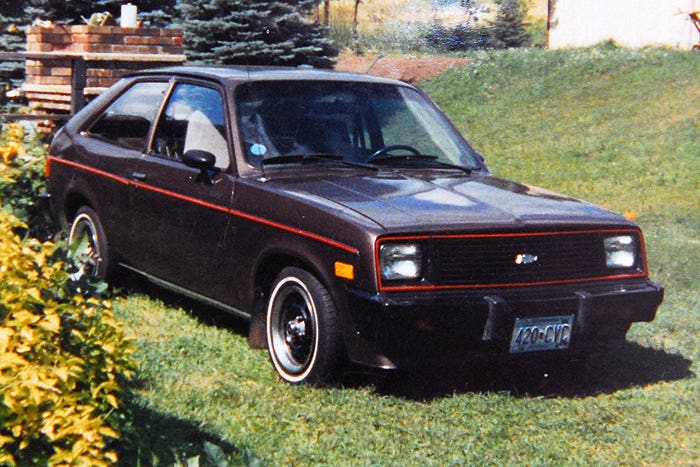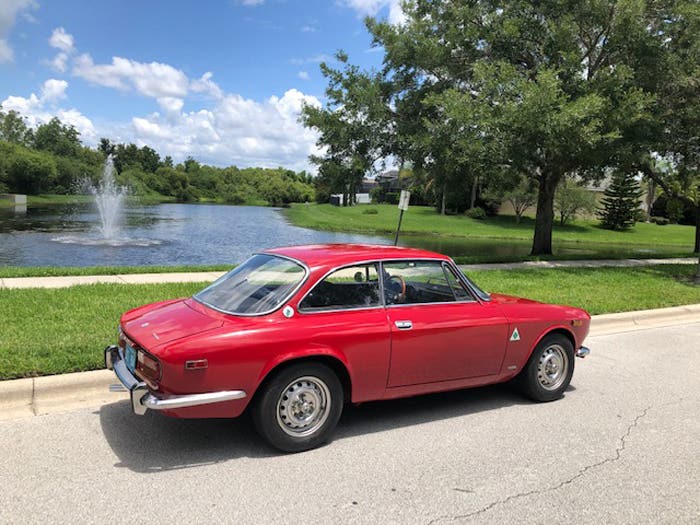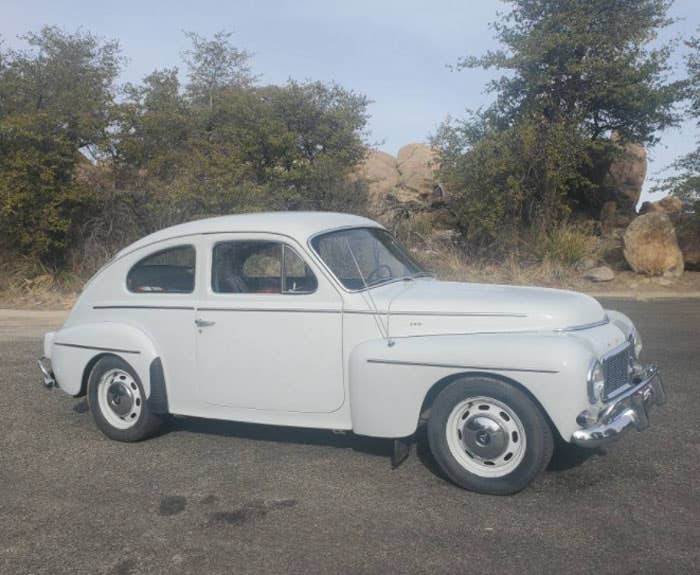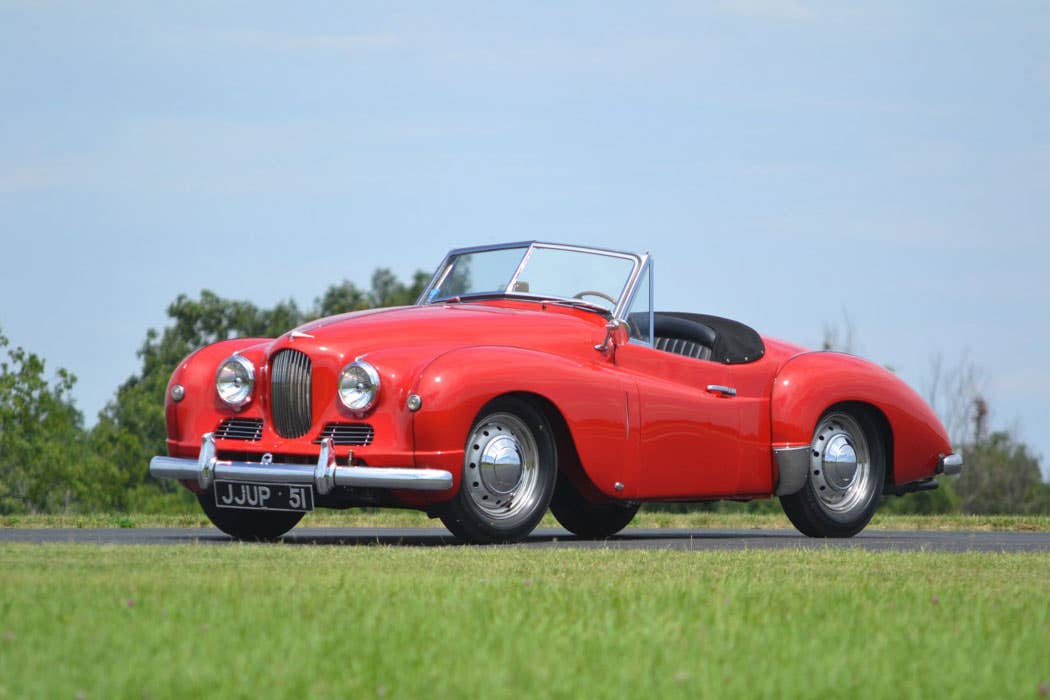The Cadillac 62 was the lowest-priced Cadillac
available in 1952 and boasted larger luggage
capacity in the trunk.
The Cadillac Automobile Company was formed in June, 1902, when Henry M. Leland met with backers of the floundering Detroit Automobile Company for the purpose of organizing a new firm. It was named for the French adventurer, Antoine de la Mothe Cadillac, who founded Detroit. The first Cadillac was put together on Oct. 17, 1902. Cadillac observed its 50th birthday in 1952 and the new cars introduced on Jan. 22, 1952 were called “Golden Anniversary” models.
Small styling changes, but bigger engineering improvements were the order of the day. The 331-cid overhead-valve V-8 got a four-barrel carburetor, a new free-flowing intake manifold, larger exhaust valves, and dual-exhaust manifolds. It now produced 190 hp at 4000 rpm. A new type of Hydra-Matic automatic transmission was standard in all models except Fleetwood 75s.
The transmission’s two drive positions included one for operation on open roads and the other was for driving on congested city streets or in mountains. The first went through three gear ratios and the other went through four. Saginaw power steering was a new option. The hydraulic assist took over when three or more pounds of “pull” were exerted on the steering wheel. Ads said power steering eliminated up to 75 percent of normal steering effort. Also new was a 12-volt electrical system.
Cadillac promoted the 1952 model as a “Cadillac Among Cadillacs” and said the new lineup climaxed 50 years of progress.
“There can be little doubt that automotive history will record 1952 as a truly great Cadillac year,” read one flowery claim. “For in this year a full half century of progress in engineering, in styling and in craftsmanship has climaxed in one magnificent motor car — the Golden Anniversary Cadillac.”
A special Golden Anniversary model even turned up on the 1952 auto show circuit. This was the prototype for the limited-production 1953 Eldorado. The press release issued on Jan. 22, 1952, said:
“The motorist who shares the craftsman's pleasure in exquisite handicraft will instantly find kinship with Cadillac's fabulous ELDORADO. This exotic convertible dramatically blends two great fields of human endeavor. In an expression of the ageless arts, ELDORADO reveals a treatment of gold on a gleaming, ivory-like surface. A sports car in character, the long, low body of the ELDORADO is finished in a dazzling, white lacquer. Bright, East-Indian, Pepper Red leather heightens the enchanting effect of the artistic interior. The seatbacks are piped in modern horseshoe pattern with door inserts of the same theme. Crash pad and instrument board top are of an expanded Royalite skin, perfectly matching the leather. The steering wheel carries…its covering of hand sewn, East-Indian, Pepper Red leather which is baseball stitched on the back. The ELDORADO's instrument board inserts, door moldings and kick strips are of gold plated, ripple patterned material.”
A second show car seen this year was the Cadillac Townsman, a gussied-up version of the 60 Special sedan that also had links to the 50-years celebration. The press release covering this car said:
“The Cadillac Townsman presents the luxurious 60 Special Sedan in appointments of regal splendor as a token of the Golden Anniversary. Lacquered a glistening Nubian black, the TOWNSMAN is crowned with a soft, gold-hued top...
In the world of automobiles the quest of interior artistry is ceaseless. Many attempts bring common results—a few are fine works. A masterpiece is achieved rarely—such is the TOWNSMAN. Those who view the interior gaze in hushed awe upon the jewel case-like interior of rich gold and soft, deep black. Here, indeed, the jewels do appear—for crested emblems of gold metallic thread have been woven into the cloth by Jacquard loomsmen. The cloth, on which the symbol of Cadillac has been reproduced, is a rich Deauville (golden beige) nylon. These gem-studded panels contrast elegantly with an edging of soft, black velour.”
It took a good eye to spot design revisions made to the production-type Cadillacs for 1952. Instead of miniature egg-crate grilles below the headlights, there were now solid trim plates with small, gold, winged emblems in the same position. The V-for-V-8 emblem and Cadillac crest on the hood were wider. The trunk on the 62 sedan was made higher to increase its luggage capacity. At the rear, the directional lights and back-up lights were built into the taillights. That year, Cadillacs had four mufflers and tailpipes that exited through dual exhaust slits in the rear bumper.
The Cadillac 62 became the lowest-priced Cadillac line. It contained the same four body styles as in 1951 and prices ranged from $3,542 for the Club Coupe to $4,110 for the convertible, of which 6,400 were made. The 62s could be identified by the Cadillac crest over a broad “V” on the trunk lid. The Coupe de Ville again had a script nameplate on the rear roof pillar. They rode the same
126-inch wheelbase. Overall length was 215-1/2 inches for the sedan and 220-1/2 inches for the other models.
A “Sixty-Special” script on the trunk identified the 1952 model of the same name. It also had the trademark chrome louvers on the rear fenders, eight on either side of the car. Hydraulically-operated power window lifts were standard. The Sixty Special again used the 130-inch wheelbase and it had a 224-1/2-inch overall length. The price this year increased to $4,720 and production tapered off to 16,110 units.
Styling changes for the big Fleetwood 75 series conformed to the year’s “Golden Anniversary” theme. Two models used the extra-long General Motors “D” body. The seven-passenger sedan and the limousine had jump seats and the limousine had a window separating the driver and passenger compartments. Cadillac built 1,400 of the $5,360 sedans and 1,800 of the $5,572 limousines.
Cadillac had a successful anniversary season, anchoring its hold on the top position in luxury-car sales. Its calendar-year output dropped six percent to 96,850 cars, but that had to be measured against an 8.5 percent drop for that segment of the market. In fact, Cadillac’s 35.9 percent share of the luxury market was a half-percent gain. Model-year production included 2,200 Fleetwood 75 cars, 1,694 Fleetwood 75 commercial chassis and 90,715 other Cadillacs.
CLICK HERE to tell us what you think in the Old Cars Weekly Forums








